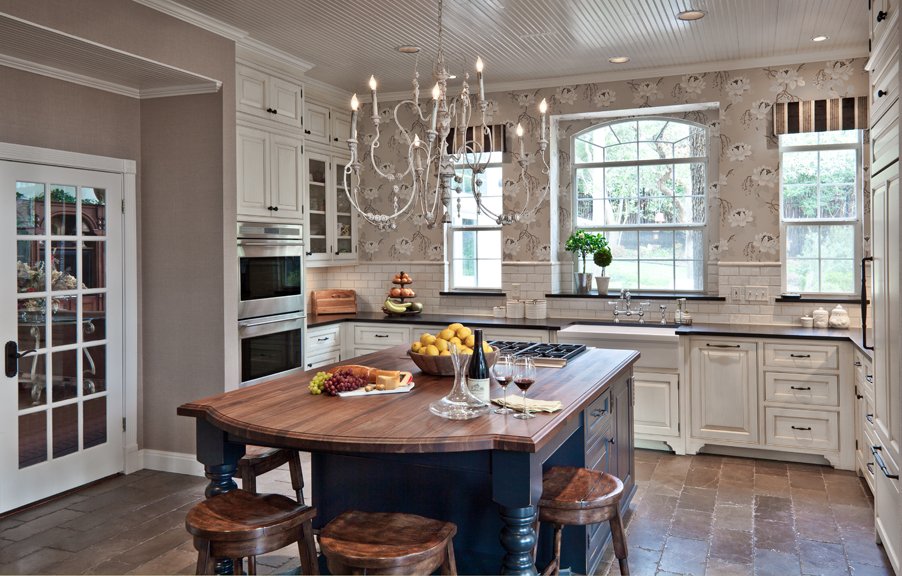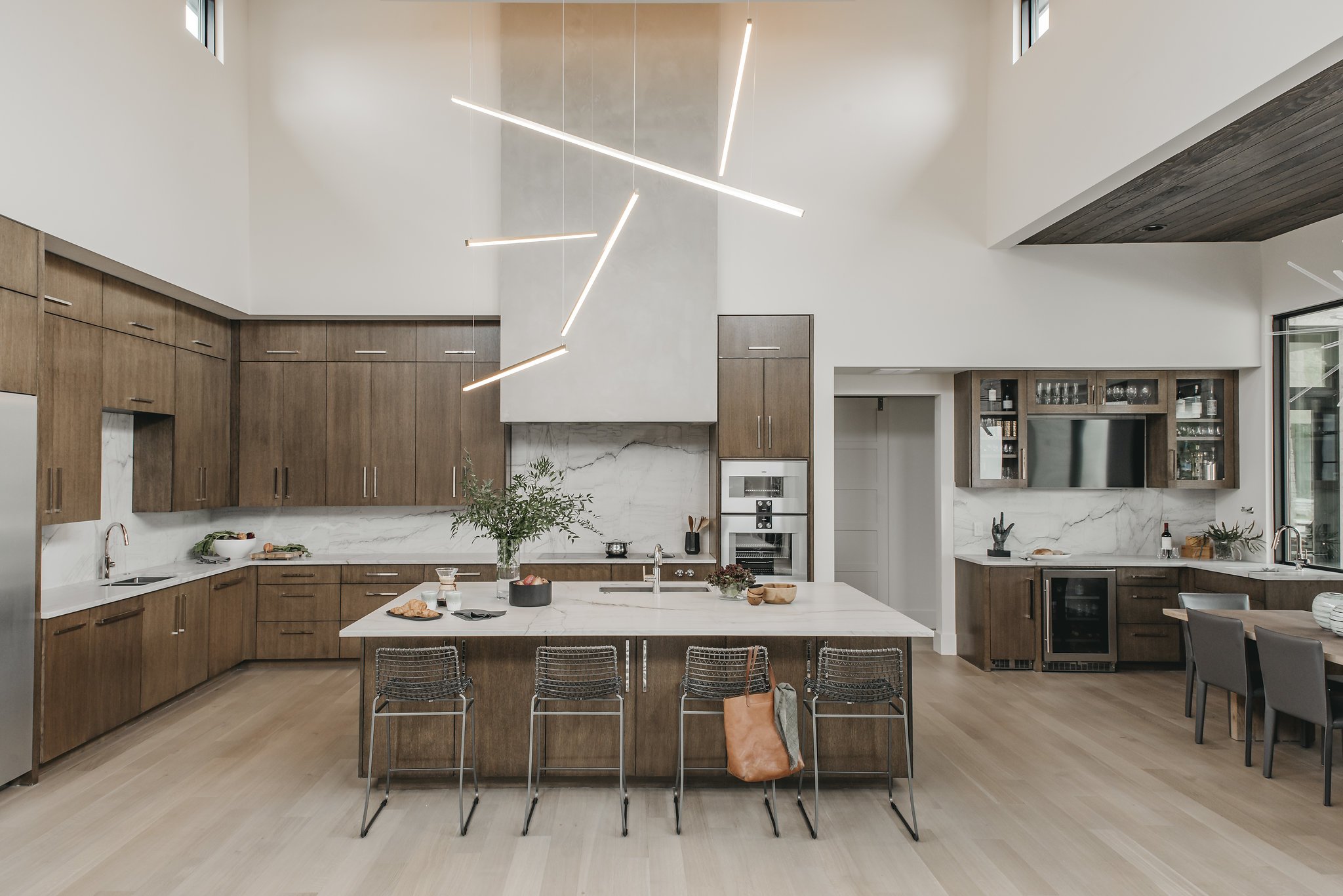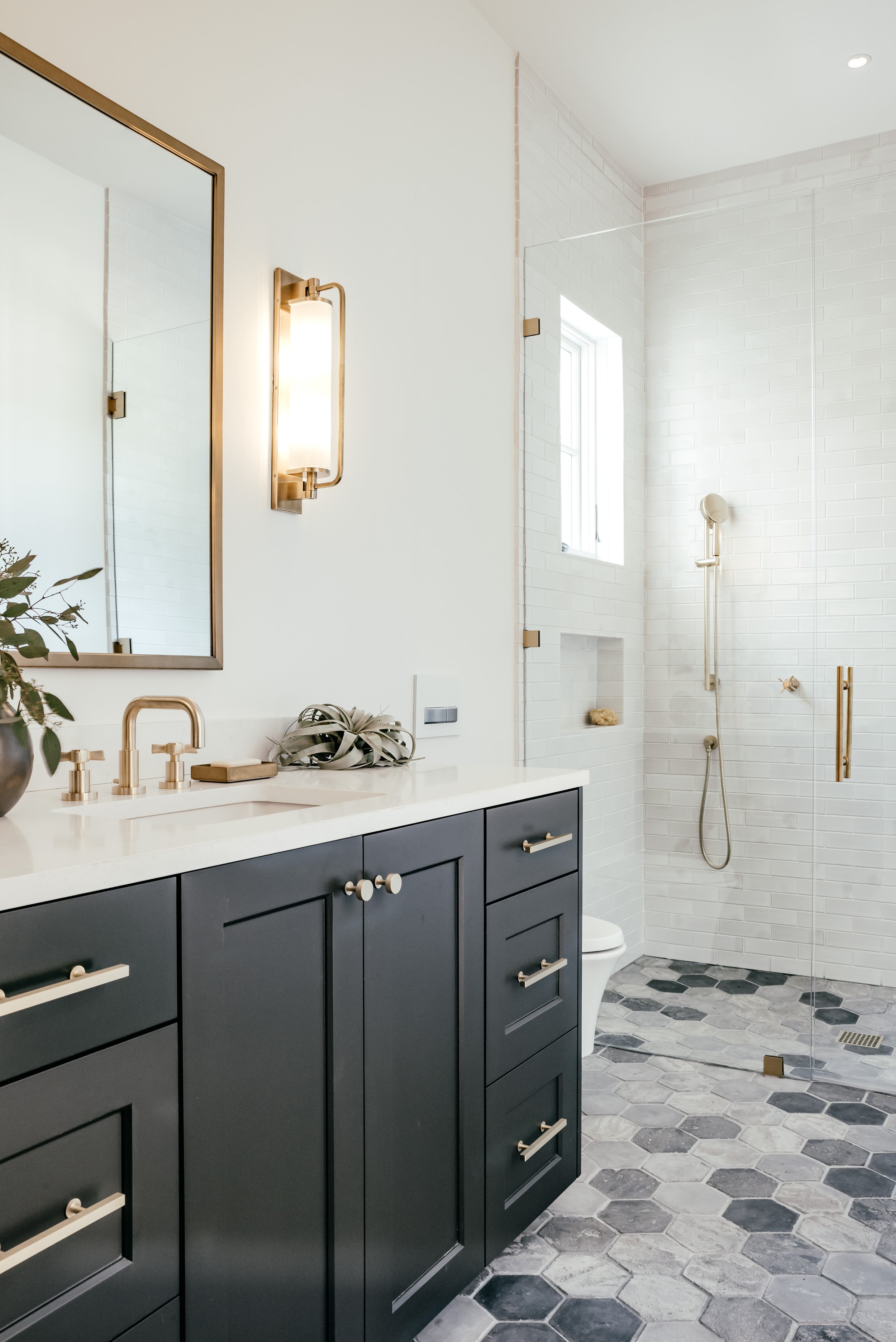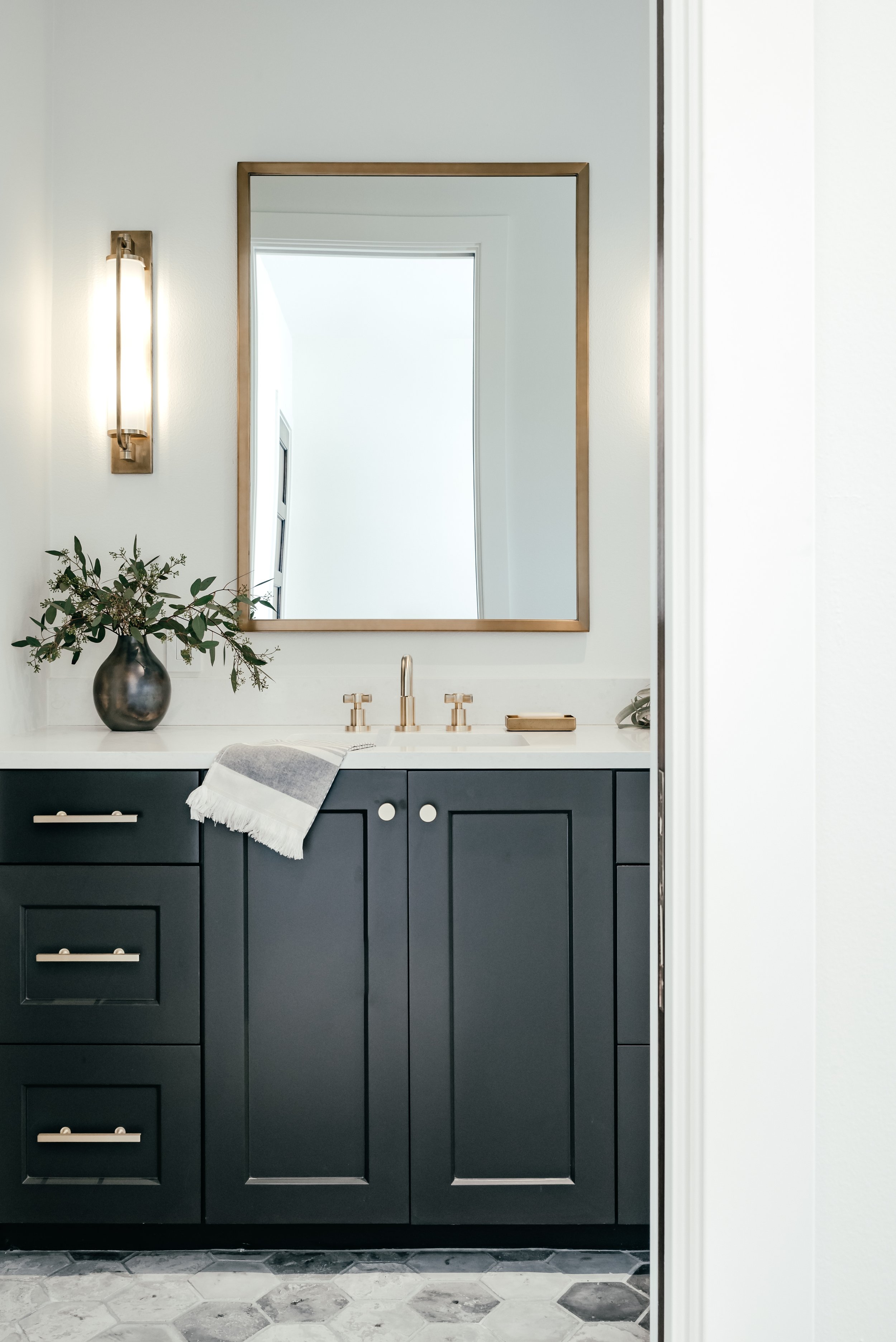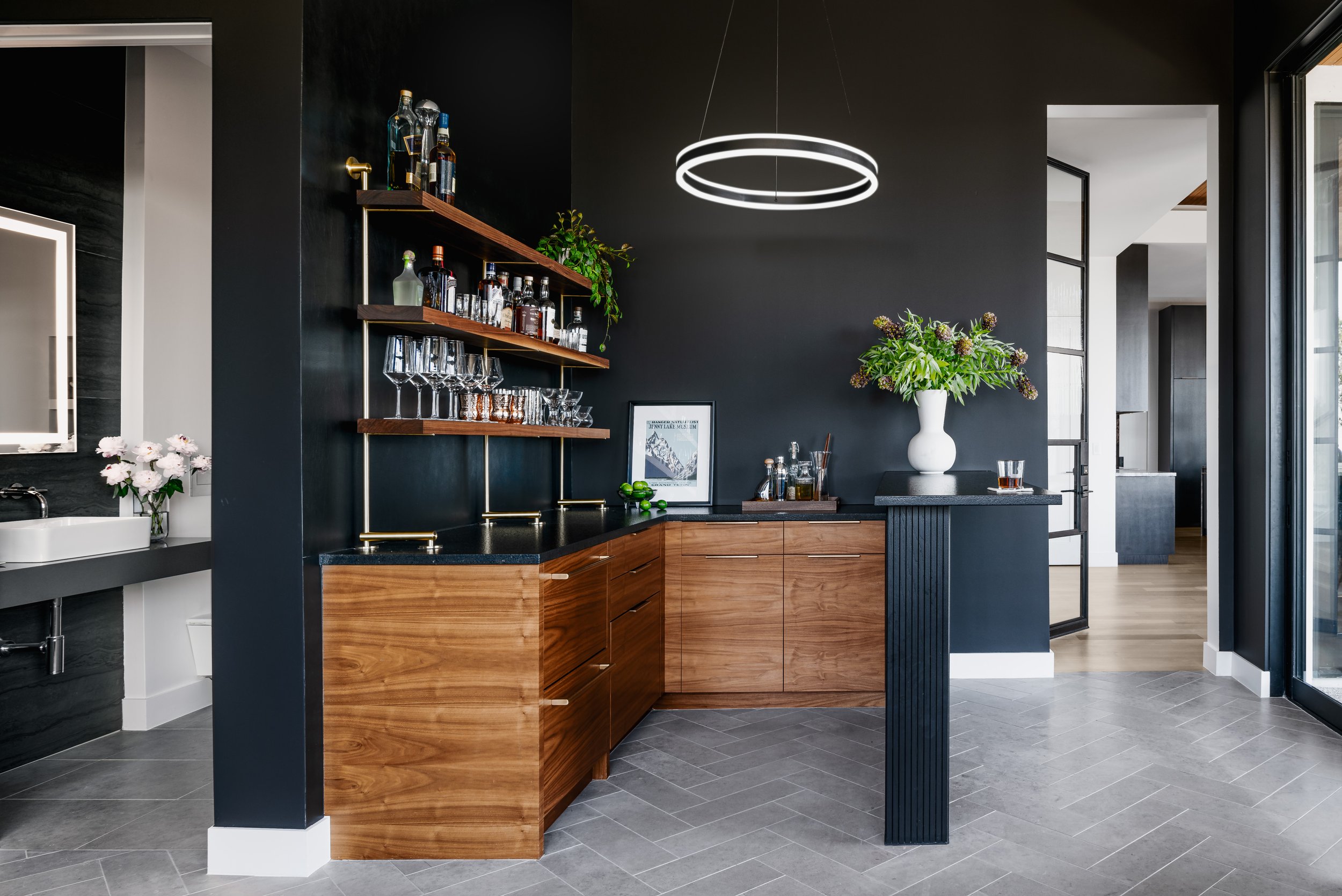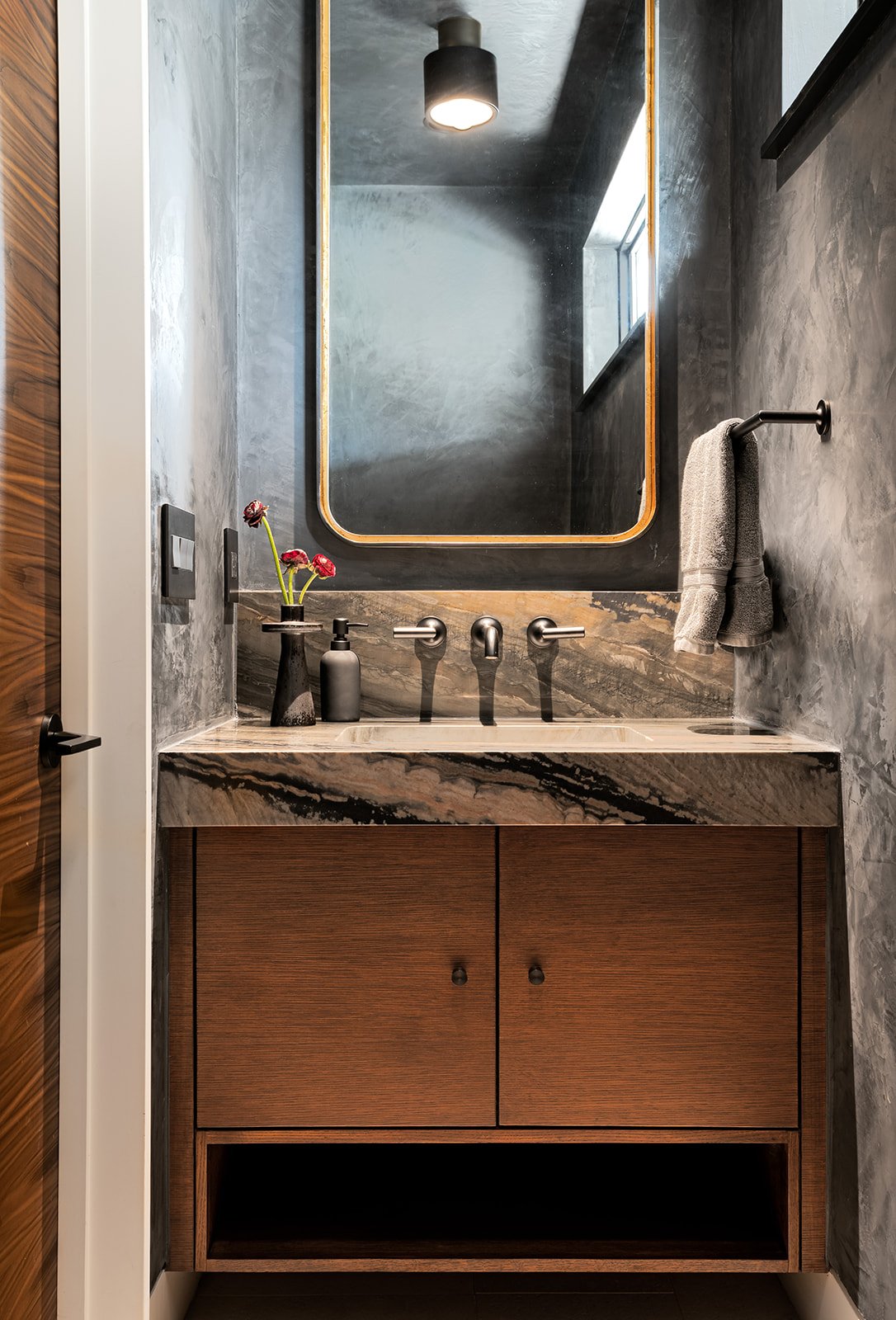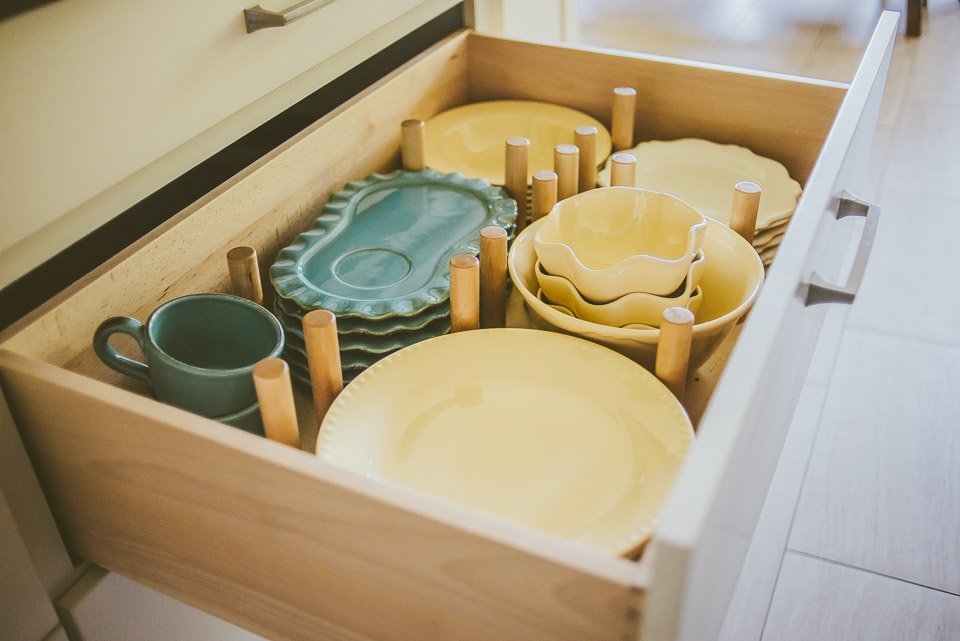Let’s Have a Cabinet Conversation…
Last month, we talked about doors, and I have spent the last few weeks diving deep into vendor comparisons for both doors and cabinets, so this month let’s talk about cabinets. Cabinets significantly impact the look, feel, and function of your space, from the kitchen and high use areas, to custom built-ins for storage or display. Here are some considerations for choosing the best cabinets for your home. In this blog we’ll review details of cabinet construction, styles, and finishes.
My Guide to the Best Cabinets for Your Kitchen, Bath, and Home
Three Cabinet Factors to Consider
Several factors affect cabinet function, style, and quality. I’m going to focus on three main categories:
Cabinet Construction Methods
Cabinet Door Styles
Cabinet Wood Finishes and Species
1. What to Look for in Cabinet Construction
Framed vs. Frameless Cabinets
All cabinets fall into one of two categories: Framed or frameless.
Framed: Like a picture frame, these cabinets feature a visible face frame, or lip, on the front of the cabinet box, creating a sturdy construction and adding a surface to mount doors. American cabinet builders have used this construction method for years.
Frameless: Taking a more streamlined approach, European cabinetmakers developed frameless cabinets. Frameless cabinets eliminate the face frame, providing easier access into the cabinet and a more open and sleek aesthetic.
As long as you work with a reputable cabinet shop, the framed vs. frameless cabinet decision is not a driving factor for me. This choice is driven more by the next three factors which relate to style.
Overlay, European, and Inset Cabinets
When it comes to the cabinet construction decision, I pay much more attention to whether the cabinets are Overlay, European, or Inset.
Overlay: Available in framed and frameless designs, Overlay cabinet doors feature either full- or partial-door overlays. Full overlay doors (my preference in Overlay styles) cover the entire cabinet face and structure so all you see are the door fronts. Partial overlay doors cover a portion of the cabinet structure, leaving a gap between doors that reveals the frame. Overlay construction is more economical than European and Inset.
European: European-style cabinets are always frameless, utilizing their accessible design with doors attached directly to the cabinet box. European cabinets tend to feel larger and provide easy access to the contents inside, and the simple design makes them the go-to choice for contemporary interiors.
Inset: Inset cabinets are always framed. Unlike Overlay and European cabinets where the doors cover the cabinet structure, inset doors are set into the frame and sit flush when closed. It is an elegant look, and the detailed craftsmanship takes time and precision, so it is not the most economical choice.
As part of our interior design process, we review these construction methods with clients and discuss how they differ in look, function, and price. When using a quality cabinet builder, one kind of construction isn’t better than another. Regarding style, I like to use frameless European cabinets for a contemporary house, and inset cabinets in a more traditional home.
Other Cabinet Construction Details to Note
Signs of Quality Cabinets
When looking for quality cabinet construction, I gravitate toward solid wood or plywood, and avoid particle board. I also like to examine how drawer boxes are constructed. For example, dovetail joints are a sign of quality, whereas glued drawers are not as durable.
Cabinet Upgrades
For optimal function, pay attention to cabinet hardware features. Most cabinet shops offer soft-close drawers and hinges, and extended slides. The soft-close feature is more expensive, but prevents noisy slamming in high use areas. Full-extension slides on drawers allow for better accessibility of items in the very back. Have you ever had cheaply made cabinets where the drawer doesn’t open very far? Not ideal! For larger drawers, you’ll want to ensure you have slides that can support the weight of what you plan to store. 50 pounds is a basic standard. Heavier duty drawers jump from 75 pounds all the way up to 220 pounds. I find newer cabinets feel like they have much better storage and accessibility, mostly due to these types of features.
Pro Tip: You Don’t Need Every Cabinet Upgrade
When selecting cabinets, don’t feel pressured to choose every upgrade. Instead, focus on the features necessary to your everyday routine, and save money in secondary areas. Whichever cabinet shop the builder wants to use, find out which decisions are upcharged versus their standard offering so you can make informed design decisions.
Pictured: European, Overlay, and Inset Cabinets.
2. Cabinet Door Styles
Similar to exterior and interior doors, select cabinet doors consistent with the style of your home. The three most common cabinet door styles include:
Flat-panel Cabinets
Flat-panel cabinets, often called shaker-style, feature a flat panel with a flat trim around the front face — great for farmhouse and transitional homes.
Slab-front Cabinets
Slab-front cabinets feature a solid panel with little ornamentation, providing a sleek and simple style perfect for contemporary and modern homes.
Raised-panel Cabinets
Raised-panel cabinets add an extra layer of dimension with a curved or beveled edge that bridges the elevated relief of the cabinet front — perfect for traditional homes.
These cabinet styles can be accented with additional design elements. For example, you might see a small bead or bevel where the stile and rail meet the panel or a chamfered door edge. While you may know the general style door you like, find out the additional detail work available from your cabinetmaker. When choosing cabinet door styles, think about the architectural style of your home rather than trends. I often use the same door style throughout most of the house. Then, I’ll introduce a subtle variation in a few specific areas for effect. The door style might slightly impact the price, but it is rarely a large factor.
Pictured: Slab, Shaker, Raised Panel Cabinet Doors
3. Cabinet Wood Finishes and Species
Cabinet Wood Finishes
Cabinet finishes affect the color and character of your cabinets. First, you will choose between stained versus painted. From there, you will choose an exact tone and hue. The cabinet finish is entirely up to personal preference and the style of your home.
Cabinet Wood Species
The species, or the type of wood used to build the visible cabinet parts, affects the end color and finish. For example, some wood types lean more orange than brown when stained or will take on a lighter or darker hue. Some species have a heavy, textural grain or knots, adding rustic character. When it comes to staining or painting, the wood species will play an important role. For example, rough-textured oak cabinets won’t look smooth when painted, and the grain will show through. There is also a common perception that stained cabinets are more expensive than painted cabinets, which is sometimes true but not always. Ultimately, wood species has the biggest effect on price.
Pictures : Painted, Natural Walnut, Stained White Oak
Pro Tip: When It Comes to Cabinets, Think Function First
No matter what cabinet construction, door style, or finish you choose, think function first. What functional needs are important to you? For example, if you like cooking, you may want to invest more in soft-close hinges, extended drawer slides, and functional accessories. Most cabinet shops offer specialty accessories and inserts for specific organizational needs. These features are handy for clients who often cook, entertain, or have a big family. Think about which conveniences will be most useful for how you live, and know that they always come at an added cost.
Pictured: Functional Dog Food Storage and Peg Drawers
The Bottom Line: Don’t Compromise on Cabinets
A well-built cabinet is unmistakable, contributing to the overall feeling of quality and functionality in a house. I once had a family member remodel his kitchen in preparation for selling the home, and he wanted to do so economically. I told him that quality kitchen cabinets are important in a nice house. He opted to hire a contractor who offered a really low price. Later he said to me, “You were right. These cabinets feel like cheap apartment cabinets!” Based on the price, that did not surprise me. He could still sell the house because it had many great qualities. However, if he had continued living there, the cabinets would have become a frustration. (They already did in the short time he stayed!) When clients attempt to trim their budget, I tell them never to compromise on cabinets. You will see and use your cabinetry every day, so it needs to support the style of your home and your quality of life..



